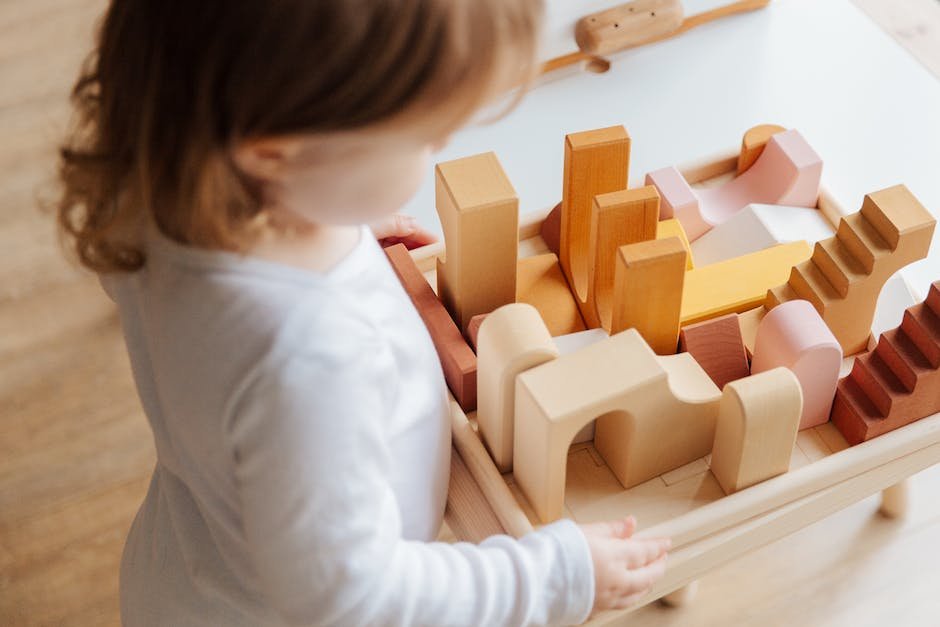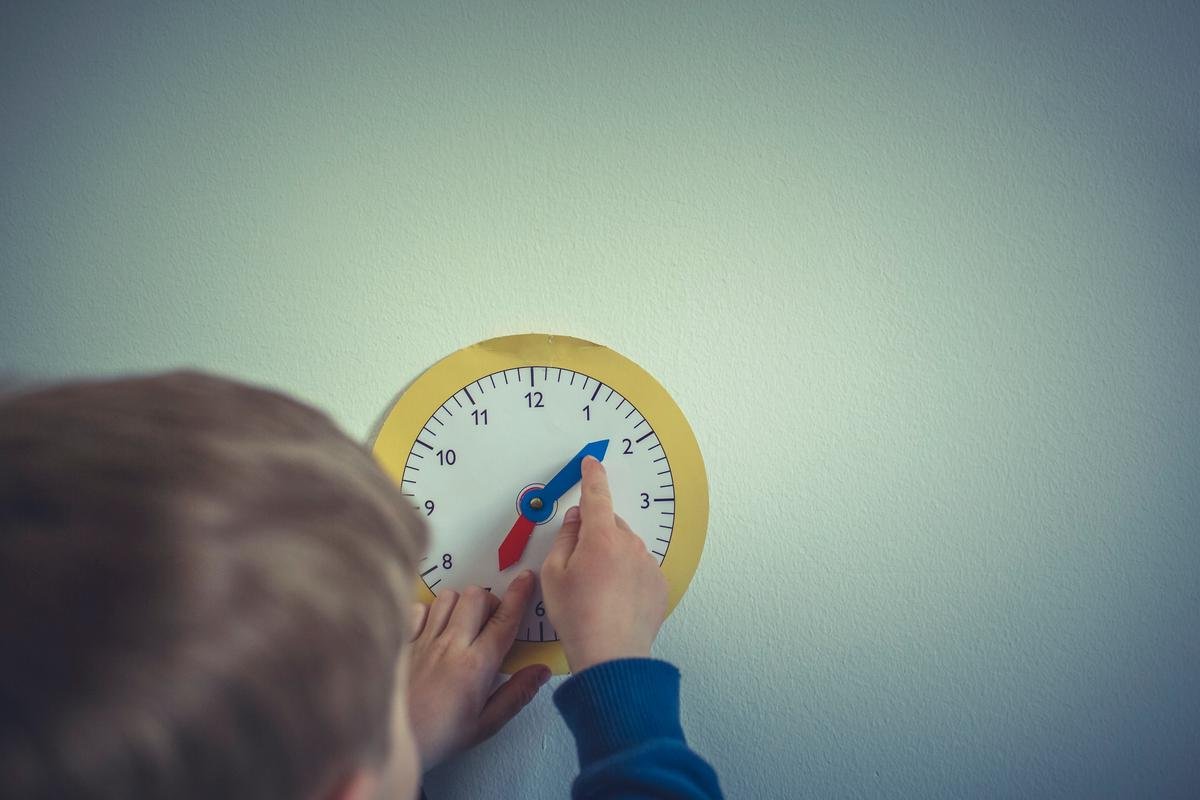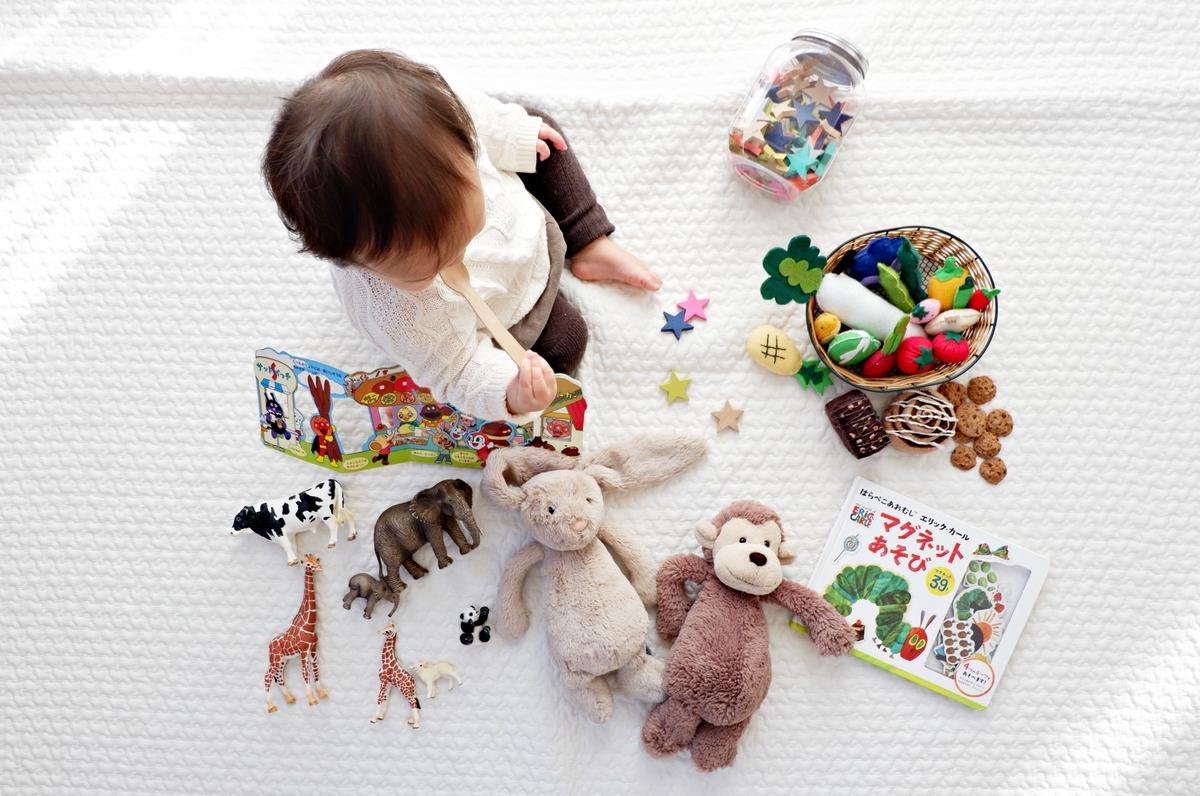
Autism Spectrum Disorder (ASD) is a broad condition showcasing myriad of behaviors and patterns, often misunderstood or misconstrued. A deep dive into this intriguing world enables us to caveat these distinctive behaviors nurturing a better understanding, acceptance, and inclusive society. A common behavior observed in children with ASD is toy hoarding. This seemingly unusual behavior represents the child’s own unique design and order of the world giving them a sense of peace and tranquility. Through understanding, we can view this act not as a disparaging disorder, but a fascinating aspect of a child’s world.
Understanding Autism and Its Symptoms
Understanding Autism: Common Behavioral Patterns and Symptoms
Autism, or Autism Spectrum Disorder (ASD), is a complex and multi-faceted disorder. As parents, it’s paramount to recognize and understand the common behavioral patterns and symptoms associated with ASD. This is the first bold step towards seeking timely, professional help, ultimately leading to quality guidance and support.
Autism affects one in 54 children according to the Centers for Disease Control and Prevention (CDC). Each child’s experience with autism is unique, making it vital to understand the wide spectrum of behaviors and symptoms associated with this condition.
Let’s delve into some of the most common autism behaviors and symptoms.
- Communication and Socialization Difficulties:
- Repetitive and Restricted Behaviors:
- Sensory Sensitivities:
- Developing Interests in Specific Activities or Topics:
Children with autism often face challenges in their social interactions and communication. They may not respond when their name is called, avoid eye contact, and have trouble understanding other people’s feelings or talking about their own. Many children with autism also find it hard to make friends and often prefer to play alone.
Children on the autism spectrum often exhibit repetitive behaviors and resist changes in their routine. This could include repetitive motor behaviors like hand flapping, spinning objects, or arranging items in a line. They might insist on eating the same food every day or become upset by changes in their daily schedule.
Many children with autism have unusual responses to sensory experiences. This could mean they become overwhelmed in noisy environments, are sensitive to specific textures in their food or clothing, or are fascinated with lights or moving objects.
Children with autism often develop a deep, almost obsessive, interest in specific topics or activities. Whether it’s bricks, trains, a TV show, or bugs, this interest often surpasses that of their peers. While this can help them excel in certain areas, it can also limit their experiences and interactions.
Recognizing these patterns early can make a world of difference in managing autism. Every child with autism should be seen as an individual with their unique strengths and challenges. It’s crucial to recall that autism is a wide spectrum, and thus, each child may exhibit different symptoms or behaviours.
In closing, recognizing and understanding the symptoms of autism is significant in being able to provide the necessary support for a child with ASD. Remember, you’re not alone in this journey. There are loads of resources available both online and offline, and by reaching out, families will find there’s a warm, supportive community ready to help.
Yes, raising a child with autism can be challenging, but it’s also filled with moments of joy, triumph, and learning. Every milestone reached is a celebration of their unique journey in this world.
Remember that understanding is the first step to acceptance, and only with acceptance can there be love, ensuring each child feels cherished, valued, and special.

Behavioral Patterns: Toy Hoarding in Children with Autism
Title: Exploring the Underlying Causes of Toy Hoarding in Children with Autism
Harboring a fascination for certain toys is quite typical for youngsters. Even more so, when a child is on the autism spectrum, these passions can rise to an even higher degree, sometimes resulting in what could be perceived as toy hoarding. It’s essential to try and approach this situation with understanding, empathy, and knowledge.
First, let’s delve into why this behavior occurs. While each child with autism is unique, certain common threads can explain this tendency. A constant in their lives frequently contributes to their comfort or soothes them. For a child with autism, a favored toy or collection of toys often serves as this comforting constant, somewhat like a security blanket. This predictability provides a sense of control, something particularly important in a world that can often seem overwhelming and unpredictable for a child with autism.
A child with ASD might also display this behavior out of strong attachment or fascination with a specific category of objects, an aspect usually rooted in their intense and particular interests. By owning numerous toys of the same theme, your child might simply be immersing themselves in an area that sparks joy and fascination.
Furthermore, hoarding behaviors might stem from the child’s desire for order and routine, traits often associated with autism. By keeping these toys close, they create a personal order that soothes their minds. Additionally, the behavior could even be driven by the sheer sensory pleasure that these toys bring, satisfying their unique sensory needs.
However, as parents, it’s essential to manage this hoarding behavior responsibly. Here are a few suggestions.
-
Foremost, ensure that the child has a designated area to store their toys without interrupting daily life routines or creating a hazardous environment. Teaching them to store and sort the toys in a particular order could also tap into their love for structure, thus making tidying up a fun activity.
-
Next, in the case of excessive hoarding, gentle intervention might be necessary. One effective strategy might involve introducing new toys or interests gradually and ensuring that they align with the child’s current fixations. Meanwhile, subtly reduce the supply of their obsessed toys without making it noticeable.
-
Finally, looking beyond the behavior is crucial. Understanding what triggers the urge to hoard could provide valuable insight into managing it. While outpatient therapies or specialized programs might help children in severe cases, often the most significant impact comes from the patient guidance and understanding at home.
Remember, toy hoarding amongst children with autism isn’t defiant or rebellious behavior but a coping mechanism. Let’s approach it with empathy and understanding while gently guiding them towards healthier outlets. In the end, every child with ASD is unique — and appreciating this uniqueness is the first step in fostering their development in a loving, supportive environment. Strengthening their skills and supporting their growth while honoring their individuality is a balance every parent works towards, navigated with patience, understanding, and, most importantly, love.

Photo by markusspiske on Unsplash
Impact of Toy Hoarding on Family Dynamics
The Unique Worlds We Create: Managing Toy Hoarding in Children
If you’ve ever experienced stepping on your little one’s toy at the end of a long day or spent precious minutes looking for your remote among their colossal collection of action figures, cars, and dolls, you know what we’re talking about. It’s about understanding the unique world of toy hoarding and its impact on your family environment. Watching wide-eyed as your child’s collection stretches beyond the playroom, one might wonder: Is this normal? How does this affect our family life? And most importantly, how can we manage this in a kind, understanding manner?
Family life, much like a well-oiled machine, runs on order and organization. The sudden overflow of toys might throw a wrench in this harmony, creating clutter and potential for frequent disagreements. On a more serious note, excess toys may also promote unhealthy attachment behaviors and a form of self-isolation for the child, with their toy world creating an unintentional, ever-deepening divide between them and your family.
Understanding the link between toy hoarding and family life is a crucial step, but how does a parent handle this delicately?
Managing toy hoarding requires a careful, conscious approach. One reliable method could be the introduction of a designated storage area within the home for the toys. This encourages the little ones to understand that multiple spaces can be used for multiple things – a drawer for their toys, a shelf for their storybooks, and a desk for their art supplies.
Another strategy can be teaching them the vital skill of organization. While it might seem like a small step, this way of handling not only helps reduce the volume of toys cluttering your home, but also subtly teaches your child the skill of prioritizing and making choices – crucial abilities that can positively impact their developmental journey.
Stepping in to manage your child’s toy hoarding shouldn’t make them feel uprooted from their safe haven. This calls for gentle intervention to reshape habits rather than an abrupt denial of their comforts. This process may require patience and time, but remember every child has their own pace, and your journey is unique.
In some instances, you might notice specific triggers causing an increase in the hoarding behavior, such as a move or a change in their routine. If these persist, a professional consultation might be concrete assistance to consider.
Understanding your child’s unique world means incorporating empathy and awareness. Change is often daunting, and for children, especially so. The key is to approach your child’s tendency to hoard toys with a perspective of acceptance. We’re all wired differently, and these differences make us who we are.
Lastly, while managing toy hoarding might seem effort-intensive, remember to appreciate the different paths in which our children develop. The world of a child with ASD is beautifully unique, much like their elaborate collection of toys that might occasionally sprawl across your living room. Through understanding, patience, love, and empathy, the toy hoarding journey could be significantly eased, making every little step along the way special. In essence, it’s about embracing their universe while creating a happy, healthy space for everyone in your family.
Here’s to making beautiful memories in the midst of the toys and the joys!

Photo by itshoobastank on Unsplash
Practical Strategies to Manage Toy Hoarding in Children with Autism
As we journey with our children, especially those with autism, understanding their unique idiosyncrasies is pertinent. One such quirk can be hoarding, an activity which provides comfort and solace to them. It’s only natural to want to manage this behavior, but how do we do so without causing stress or harm? Here are few feasible strategies.
First, it’s beneficial to reassess the definition of ‘hoarding.’ For individuals with autism, what often seems like hoarding could be a form of self-expression or a coping mechanism to deal with an often overwhelming world. What’s essential is that we tackle hoarding from a standpoint of understanding, not merely as a nagging disruption at home.
Now, on to the strategies. Creating a routine could have a considerable impact. If hoarding comes from a need for orderliness and predictability, establishing a daily or weekly ‘clean-up’ or ‘organization’ time can offer structure. This approach might provide a comfort similar to the act of hoarding, mitigating the anxiety that might arise from separating from their belongings.
Next, consider visualization and detailed explanations. Instead of vaguely requesting them to ‘clean their room,’ provide explicit instruction detailing how, when, and where they should organize their belongings. Visual aids such as charts or pictures can also help articulate these steps.
Another preventive measure is to ensure limited new inputs. Often, hoarding behavior can escalate when there’s an abundance of new objects coming in regularly. Talk to your family members, especially during gift-giving occasions, and ask them to contribute experiences, books, or only one or two of your child’s most coveted toys.
Since our aim is not to alienate our child, guess it’s essential to involve them in the decluttering process. Orderly purging, a term may be used to imply an organized and conscious effort, can be helpful. It involves openly communicating with them about the necessity and benefits of decluttering, offering choices, and encouraging them to decide what stays and what goes.
The next profound tip we could give is to model behavior. Your child would better understand the importance of organization and decluttering if they see you practicing it. Let them witness you sorting, organizing, and willing to part ways with their items. It’s a great opportunity to teach by showing.
Last but not least, it’s important to remember that it’s okay to seek professional help. If your family is continually overwhelmed by hoarding behavior, consider reaching out to a mental health professional who’s experienced with autism. They can provide additional techniques or strategies specific to your child’s needs.
Ultimately, managing hoarding behavior isn’t about conversion into societal norms but about balancing the child’s needs, ensuring their comfort, while creating a sustainable living environment. It’s about embracing these little quirks, loving them wholeheartedly, and making a better world for them to thrive.

Nurturing the Skills and Abilities of a Child with Autism
Enthusiasm for Life: Coaxing the Joy Out of Everyday Moments
Autism presents its own set of challenges, but with that comes a truly special array of exceptional abilities and talents unique to these wonderful children. From amazing attention to detail, exceptional memory, to being exceptionally good in certain areas like art or math, children with autism truly have the potential to sparkle in their own special way. It’s critical to remember that just like any other child, children with autism also have the potential to lead a fulfilling, joyful life. So, how can we help nurture and celebrate their skills and abilities?
Embrace Their Interests
Encourage their passions. Whether it’s being fascinated by the spin cycle of the washing machine or a deep dive into the world of dinosaurs or trains, take the opportunity to embrace these interests. This not only strengthens your bond with your child, but these interests can also be used to help them learn new skills.
Foster Strengths and Skills
Following their interests is also a wonderful way to foster their natural strengths. Use their fascination with a topic to encourage reading, comprehension, and cognitive thinking. For example, if your child loves trains, use books or documentaries on trains to improve vocabulary and foster a better understanding of the world, physics, and mechanical function.
Encourage Social Interactions
While it may be slightly more challenging, organizing controlled and supportive social situations can greatly benefit a child with autism. These could involve sharing their hobbies or interests with others. Any chance to take part, share, and cooperate in a social setting will refine their communication and group interaction skills.
Invest Time in Creative Outlets
Creative activities like painting, dancing or music can provide wonderful outlets for self-expression and emotion therapy. If your child has a knack for creativity, provide them the space and tools they need to explore and express themselves. Celebrate efforts, not just outcomes.
Learning Through Play
Play activities can be a great tool for learning. Interactive games and activities that stimulate sensory learning can be beneficial. Playing with modeling clay for instance, can stimulate tactile senses and also work on fine motor skills.
Incorporate Life Skills
Incorporate life skills into their daily routine early on to encourage independence, such as dressing themselves or setting the table. As these tasks become easier, it builds confidence, setting the stage for them to take on even more responsibilities.
Seek Guidance and Support
Remember, it’s completely okay to seek outside help. Therapists, behavioral analysts, and special education professionals have valuable experience and can provide strategies and techniques tailored to your child’s needs.
In Conclusion
Children with autism are capable of remarkable things, with so much to offer the world. As parents, caregivers, and significant figures in their lives, it’s up to us to nurture their strengths and celebrate their unique abilities. Always keep in mind, every achievement, no matter how small, is a steppingstone towards growth. Let’s cherish these precious moments of triumph, bask in the pride, and above all, let’s always fill their world with abundant love, patience, and acceptance.

Our journey in understanding autism and the particular behavior of toy hoarding elucidates us to a realization. Children with autism are a reservoir of untapped potential and unfathomable creativity. Toy hoarding can serve as a gateway to discern their inherent talents and interests that can be cultivated into something marvelous. Encouraging these children to leverage their toy hoarding abilities possibly into a structured hobby or skill unleashes infinite possibilities. Autism is not a condition that shackles; rather it’s a state that gives a unique perspective on life. By embracing this perspective, and supporting these children, we step closer to an inclusive and understanding society where each child can bloom in their own special way.




